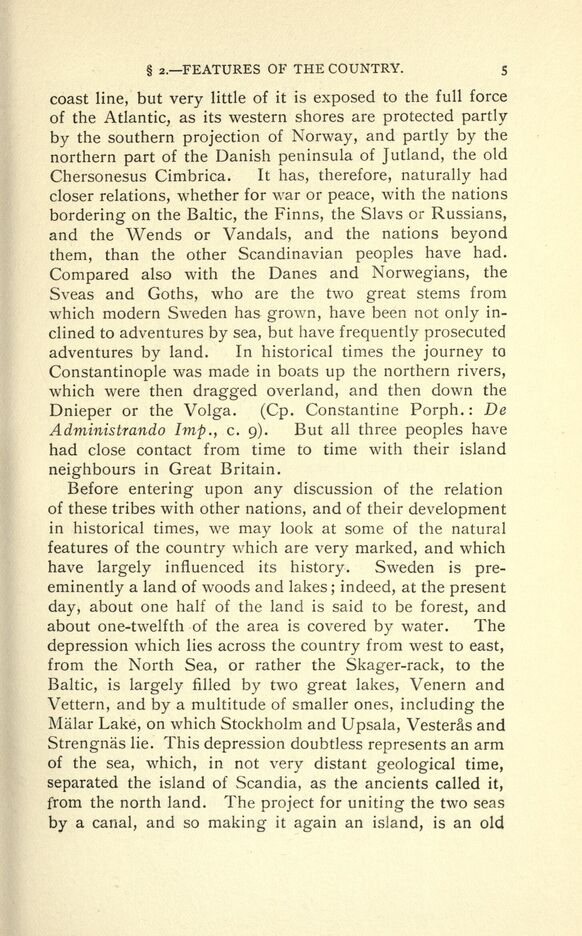
Full resolution (JPEG) - On this page / på denna sida - I. Introductory Lecture.—The Country and its Inhabitants in the Heathen Period up to 1000 A.D. - § 2. Natural Features of the Country

<< prev. page << föreg. sida << >> nästa sida >> next page >>
Below is the raw OCR text
from the above scanned image.
Do you see an error? Proofread the page now!
Här nedan syns maskintolkade texten från faksimilbilden ovan.
Ser du något fel? Korrekturläs sidan nu!
This page has been proofread at least once.
(diff)
(history)
Denna sida har korrekturlästs minst en gång.
(skillnad)
(historik)
coast line, but very little of it is exposed to the full force
of the Atlantic, as its western shores are protected partly
by the southern projection of Norway, and partly by the
northern part of the Danish peninsula of Jutland, the old
Chersonesus Cimbrica. It has, therefore, naturally had
closer relations, whether for war or peace, with the nations
bordering on the Baltic, the Finns, the Slavs or Russians,
and the Wends or Vandals, and the nations beyond
them, than the other Scandinavian peoples have had.
Compared also with the Danes and Norwegians, the
Sveas and Goths, who are the two great stems from
which modern Sweden has grown, have been not only
inclined to adventures by sea, but have frequently prosecuted
adventures by land. In historical times the journey to
Constantinople was made in boats up the northern rivers,
which were then dragged overland, and then down the
Dnieper or the Volga. (Cp. Constantine Porph.: De
Administrando Imp., c. 9). But all three peoples have
had close contact from time to time with their island
neighbours in Great Britain.
Before entering upon any discussion of the relation
of these tribes with other nations, and of their development
in historical times, we may look at some of the natural
features of the country which are very marked, and which
have largely influenced its history. Sweden is
preeminently a land of woods and lakes; indeed, at the present
day, about one half of the land is said to be forest, and
about one-twelfth of the area is covered by water. The
depression which lies across the country from west to east,
from the North Sea, or rather the Skager-rack, to the
Baltic, is largely filled by two great lakes, Venern and
Vettern, and by a multitude of smaller ones, including the
Mälar Lake, on which Stockholm and Upsala, Vesterås and
Strengnäs lie. This depression doubtless represents an arm
of the sea, which, in not very distant geological time,
separated the island of Scandia, as the ancients called it,
from the north land. The project for uniting the two seas
by a canal, and so making it again an island, is an old
<< prev. page << föreg. sida << >> nästa sida >> next page >>